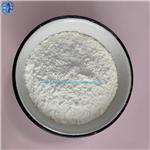- FIBRONECTIN
-

- $230.00 / 1KG
-
2023-11-30
- CAS:86088-83-7
- Min. Order: 1KG
- Purity: 99%HPLC,USP Standard
- Supply Ability: 800KGs
- FIBRONECTIN
-

- $5.85 / 1g
-
2023-11-27
- CAS:86088-83-7
- Min. Order: 100g
- Purity: 99%
- Supply Ability: 1000kg
- Fibronectin, bovine
-

- $4.85 / 1g
-
2023-11-27
- CAS:86088-83-7
- Min. Order: 100g
- Purity: 99%
- Supply Ability: 1000kg
|
| | Fibronectin Basic information |
| Product Name: | Fibronectin | | Synonyms: | Anti-Fibronectin 1, C-Terminal antibody produced in rabbit;fibronectin 1;FINC;Fibronectin solution from human fibroblasts
;Fibronectin, bovine, stabilized soln.;HFN;FIBRONECTIN (MS PLASMA);FIBRONECTIN, RAT | | CAS: | 86088-83-7 | | MF: | NULL | | MW: | 0 | | EINECS: | 289-149-2 | | Product Categories: | | | Mol File: | Mol File | ![Fibronectin Structure]() |
| | Fibronectin Chemical Properties |
| storage temp. | -20°C | | solubility | H2O: 1 mg/mL at 37 °C Store reconstituted solution in working aliquots at -20°C or lower. | | form | solution | | color | White to off-white | | Water Solubility | Miscible with water. |
| Hazard Codes | B | | WGK Germany | 3 | | F | 10-21 |
| | Fibronectin Usage And Synthesis |
| Description | Fibronectin (FN) is a glycoprotein whose size ranges from 230 to 270 kDa and usually exists as a dimer, covalently linked by a pair of disulfide bonds at the C-termini. Each monomer consists of three repeating units: 12 Type I, 2 Type II, and 15–17 Type III domains, which account for 90% of the FN sequence. Structural homologs of the Type I, II, and III domains exist in other biomolecules, suggesting that FN evolved through exon shuffling. Despite originating from a single gene, as many as 20 different human variants and 12 different rodent and cow variant FN isoforms have been identified, indicating alternative splicing mechanisms unique to species and tissue development. FN is subcategorized as either plasma FN (pFN), predominantly synthesized by liver hepatocytes, or cellular FN (cFN), which is produced by a wide variety of cells, including fibroblasts, chondrocytes, myocytes, and synovial cells. pFN circulates in the blood at a high concentration (approximately 300 μg/mL), while cFN is locally secreted[1]. | | Uses | Fibronectin solution from human fibroblasts is used for the following applications:
- It is used in purification of human extracellular matrix (ECM)
- Coating of tissue culture plates with extracellular matrix components
- Used during cell culture (For xeno-free, feeder-free culture the cells were passaged in to human fibronectin along with other components)
Fibronectin from human plasma can be used with epithelial cells, mesenchymal cells, neuronal cells, fibroblasts, neural crest cells, and endothelial cells. It is recommended for use as a cell culture substratum at 1-5 μg/cm2 or 0.5-50 μg/mL. The optimal concentration does depend on cell type as well as the application and research objectives. | | Uses | fibronectin is a cosmetic ingredient described as a surface protective agent with a moisturizing and protective effect. Produced by many types of cells, fibronectin is a glycoprotein and an important component of the skin’s basal layer. Research suggests fibronectin plays a significant role in maintaining a healthy basal layer. Fibronectin’s function in the skin is to strengthen the attachments among collagen and elastin fibers, fibroblasts, and other cells in the dermis with connective tissues. Its presence may also be important to cell growth. There is some evidence that fibronectin may act as a cell regenerator by reversing abnormal cell formation and growth. It constitutes 1 to 3 percent of the total cellular protein of fibroblasts. | | Uses | fibronectin (hydrolyzed) is a humectant and moisturizing agent for skin creams and lotions. | | General Description | Native fibronectin purified from human plasma. Effective agent for promoting attachment of cells to commonly-used culture substrates. | | Biochem/physiol Actions | Fibronectin is a high molecular mass extracellular matrix glycoprotein involved in many cellular processes, including tissue repair, embryogenesis, blood clotting, cell migration/adhesion, and embryogenesis and development. It is used in vitro as a substrate to enhance adherence and proliferation of many cell types. It has the capacity to bind to macromolecules such as collagen, fibrin, glycosaminoglycans, and Clq, apart from some bacteria. | | Purification Methods | This glycoprotein contains 5-12% of carbohydrate. It has been purified by glycine fractionation and DEAE-cellulose chromatography. This material is dissolved in 0.25M Tris-phosphate buffer pH 7.0, diluted to 20% and glycine added gradually till 2.1M when the temperature falls to below 15o. The precipitate contains mainly fibrinogen. The supernatant is discarded, and the precipitate is treated with an equal volume of H2O, cooled (to 0o) and precipitated by adding EtOH to 16% (v/v) at -4o. The precipitate contains some CI (Cold Insoluble) globulin, fibronectin and small quantities of other proteins. To remove these the precipitate is dissolved in 0.25M Tris-phosphate buffer (pH 7.0) ca 0.5% and purified by DEAE-cellulose chromatography after diluting the buffer to 0.05M buffer. [Morrison et al. J Am Chem Soc 70 3103 1948, Mosesson & Umfleet J Biol Chem 245 5728 1970, Mosesson & Amrani Blood 56 145 1980, Akiyama & Yamada Adv Enzymol 59 51 1987.] | | References |
[1] Dalton, Caleb J. and Christopher A. Lemmon. “Fibronectin: Molecular Structure, Fibrillar Structure, and Mechanochemical Signaling.”Cells 10 9 (2021): 2443.
|
| | Fibronectin Preparation Products And Raw materials |
|